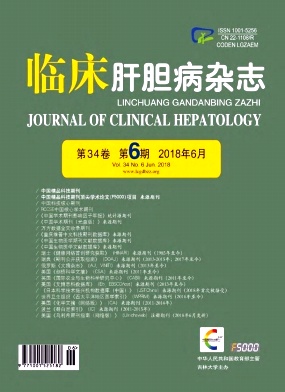|
[1]BJRNSSON ES.Hepatotoxicity by drugs:The most common implicated agents[J].Int J Mol Sci, 2016, 17 (2) :224.
|
|
[2]Drug-induced Liver Disease Study Group, Chinese Society of Hepatology, Chinese Medical Association.Guidelines for the management of drug-induced liver injury[J].J Clin Hepatol, 2015, 31 (11) :1752-1769. (in Chinese) 中华医学会肝病学分会药物性肝病学组.药物性肝损伤诊治指南[J].临床肝胆病杂志, 2015, 31 (11) :1752-1769.
|
|
[3]DEVARBHAVI H, PATIL M, REDDY VV, et al.Drug-induced acute liver failure in children and adults:Results of a single-centre study of 128 patients[J].Liver Int, 2017.[Epub ahead of print]
|
|
[4]TESCHKE R, FRENZEL C, WOLFF A, et al.Drug induced liver injury:Accuracy of diagnosis in published reports[J].Ann Hepatol, 2014, 13 (2) :248-255.
|
|
[5]CHALASANI NP, HAYASHIL PH, BONKOVSKY HL, et al.ACG Clinical Guideline:The diagnosis and management of idiosyncratic drug-induced liver injury[J].Am J Gastroenterol, 2014, 109 (7) :950-966.
|
|
[6]SGRO C, CLINARD F, OUAZIR K, et al.Incidence of drug-induced hepatic injuries:A French population-based study[J].Hepatology, 2002, 36 (2) :451-455.
|
|
[7]BJRNSSON ES, BERGMANN OM, BJRNSSON HK, et al.Incidence, presentation, and outcomes in patients with drug-induced liver injury in the general population of Iceland[J].Gastroenterology, 2013, 144 (7) :1419-1425.
|
|
[8]CHALASANI N, BONKOVSKY HL, FONTANA R, et al.Features and outcomes of 899 patients with drug-induced liver injury:The DILIN prospective study[J].Gastroenterology, 2015, 148 (7) :1340-1352.
|
|
[9]HU Q, LIU W, SHAO H.Research progress of pharmacotherapy drug-induced liver injury[J].Chin J Clin Pharmacol Ther, 2016, 21 (2) :231-236. (in Chinese) 胡琴, 刘维, 邵宏.药物性肝损伤的药物治疗研究进展[J].中国临床药理学与治疗学, 2016, 21 (2) :231-236.
|
|
[10]SUTTI S, TACKE F.Liver inflammation and regeneration in drug-induced liver injury:Sex matters[J].Clin Sci (Lond) , 2018, 132 (5) :609-613.
|
|
[11]AMACHER DE.Female gender as a susceptibility factor for druginduced liver injury[J].Hum Exp Toxicol, 2014, 33 (9) :928-939.
|
|
[12]LUCENA MI, ANDRADE RJ, KAPLOWITZ N, et al.Phenotypic characterization of idiosyncratic drug-induced liver injury:The influence of age and sex[J].Hepatology, 2009, 49 (6) :2001-2009.
|
|
[13]ZHOU SM, JIA J.696 cases of drug-induced liver injury[J].Drug Eval, 2007, 4 (6) :442-443. (in Chinese) 周世明, 贾杰.696例药物性肝损害药物的临床分析[J].药品评价, 2007, 4 (6) :442-443.
|
|
[14]LEISE MD, POTERUCHA JJ, TALWALKAR JA.Drug-induced liver injury[J].Mayo Clin Proc, 2014, 89 (1) :95-106.
|
|
[15]ZHOU Y, YANG L, LIAO Z, et al.Epidemiology of drug-induced liver injury in China:A systematic analysis of the Chinese literature including 21, 789 patients[J].Eur J Gastroenterol Hepatol, 2013, 25 (7) :825-829.
|
|
[16]ZHU Y, NIU M, CHEN J, et al.Hepatobiliary and pancreatic:Comparison between Chinese herbal medicine and Western medicine-induced liver injury of 1985 patients[J].J Gastroenterol Hepatol, 2016, 31 (8) :1476-1482.
|
|
[17]LIU CH, ZHU CW.Epidemic features, major causes, and diagnostic evaluation of herb-induced liver injury[J].J Clin Hepatol, 2017, 33 (5) :829-832. (in Chinese) 刘成海, 朱春雾.中草药相关药物性肝损伤的流行特点、主要原因与诊断评估[J].临床肝胆病杂志, 2017, 33 (5) :829-832.
|
|
[18]STICKEL F, SHOUVAL D.Hepatotoxicity of herbal and dietary supplements:An update[J].Arch Toxicol, 2015, 89 (6) :851-865.
|
|
[19]TU C, JIANG BQ, ZHAO YL, et al.Comparison of processed and crude Polygoni Multiflori Radix induced rat liver injury and screening for sensitive indicators[J].Chin J Chin Mater Med, 2015, 40 (4) :654-660. (in Chinese) 涂灿, 蒋冰倩, 赵艳玲, 等.何首乌炮制前后对大鼠肝脏的损伤比较及敏感指标筛选[J].中国中药杂志, 2015, 40 (4) :654-660.
|
|
[20]CHEN M, SUZUKI A, BORLAK J, et al.Drug-induced liver injury:Interactions between drug properties and host factors[J].J Hepatol, 2015, 63 (2) :503-514.
|
|
[21]HUANG YS.Recent progress in genetic variation and risk of antituberculosis drug-induced liver injury[J].J Chin Med Assoc, 2014, 77 (4) :169-173.
|
|
[22]DAS S, BEHERA SK, XAVIER AS.Agreement among different scales for causality assessment in drug-induced liver injury[J].Clin Drug Investig, 2018, 38 (3) :211-218.
|
|
[23]PETROS Z, KISHIKAWA J, MAKONNEN E, et al.HLA-B*57allele is associated with concomitant anti-tuberculosis and antiretroviral drugs induced liver toxicity in Ethiopians[J].Front Pharmacol, 2017, 8:90.
|
|
[24]RACHI C, PIPALIYA N, PATEL R, et al.Drug induced liver injury at a tertiary hospital in India:Etiology, clinical features and predictors of mortality[J].Ann Hepatol, 2017, 16 (3) :442-450.
|
|
[25]MEDINA-CALIZ I, ROBLES-DIAZ M, GARCIA-MUOZ B, et al.Definition and risk factors for chronicity following acute idiosyncratic drug-induced liver injury[J].J Hepatol, 2016, 65 (3) :532-542.
|







 DownLoad:
DownLoad: